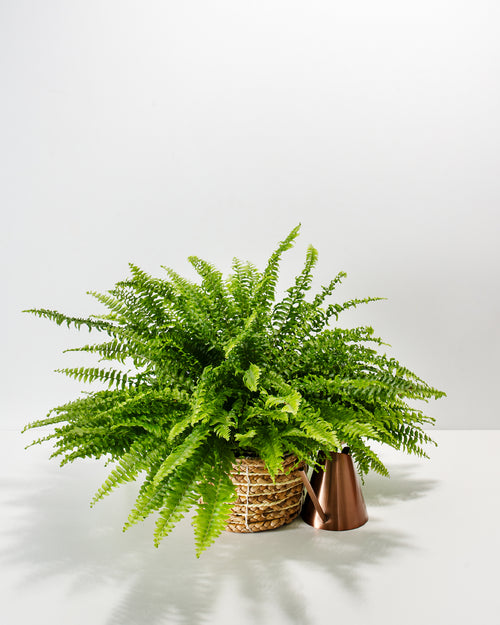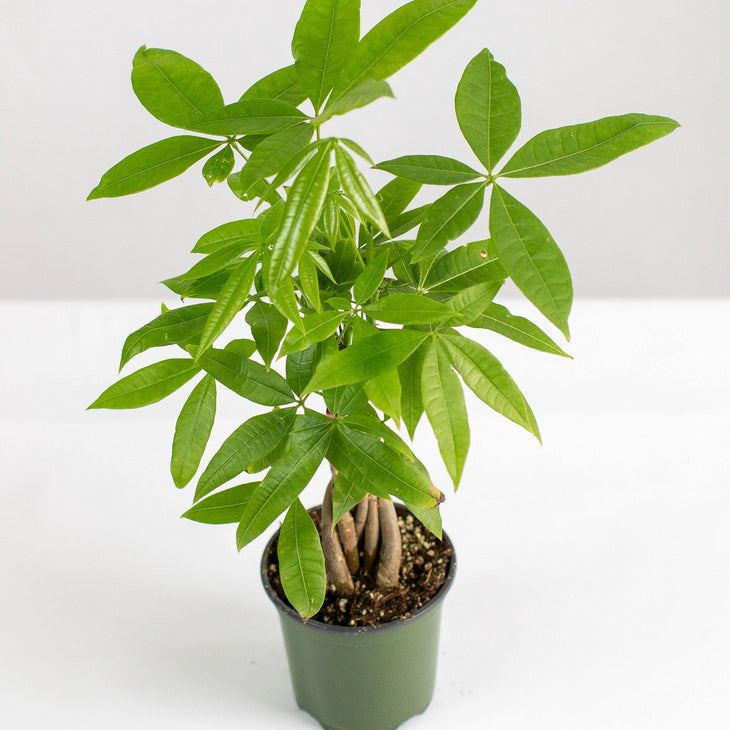Adding a green touch to your home doesn’t have to burn a hole in your pocket. Many charming but inexpensive plants can spruce up your indoors without hurting your bank balance.
Budget-friendly, low-maintenance houseplants are perfect for a green corner in your living room or bedroom and can be an ideal decorative element on your work desk. Moreover, having a few green companions around comes with multiple benefits.
So, read on to discover some great and cheap houseplants, which can help you create an indoor oasis on a budget.
Benefits of Houseplants

Houseplants don’t just liven your home. They also purify the indoor air, reduce stress, and can do wonders for a good night’s rest. Air-filtering properties: Plants improve indoor air quality by absorbing carbon dioxide and releasing oxygen. They can eliminate bad odors, allergy triggers, and pollutants. Being natural air purifiers, plants can make your home a safer place for kids and pets. Hypoallergenic properties: Houseplants, especially non-flowering ones, have a low pollen production level. If you experience seasonal pollen allergies, plants like the affordable succulents and cacti are ideal. Increase humidity: Plants release moisture during both photosynthesis and respiration – through a process called evapotranspiration. Thus, they enhance the humidity levels in dry indoor environments. Improve sleep: Plants can promote a good night’s sleep. The scent of jasmine boosts sleep quality. Plus, they contribute to a clean, comfortable sleeping environment.Mood boosters: Indoor plants reduce stress and their negative symptoms, helping you relax and uplifting your mood. Thus, houseplants are beneficial for your mental health.Enhance productivity: Plants can improve the flow of positive energy in your home or office. Thus, their presence can bring you to a mental state that lets you focus and be efficient. Aesthetic appeal: Houseplants add the decorative elements of nature’s beauty to your living space. When grown outdoors, they enhance your property’s curb appeal. Feng Shui properties: Many indoor plants have special meaning in Feng Shui, bringing wealth and good fortune; harmony and positive energy, and more to the home. Hence, plants also make a great gift, be it for your friend, relative, or employee.
Key Factors That Influence the Price of Houseplants
When you shop for cheap plants online or at local garden centers, you’ll notice a wide price range. Factors like plant size, rarity, difficulty to grow, resources or expertise required, etc., impact the cost of houseplants. Demand: Plants with limited availability cost more, due to high demand and low supply. Conversely, plants in abundant stock are naturally more pocket-friendly.Rarity: It’s hard to supply some plants that only grow in specific regions, seasons, or climates. Such rare plants cost more than commonly available ones. Size: Newly-sprouted small plants or seedlings need less time to grow and fewer resources. Larger plants require more time and resources to grow, making them costlier.Propagation & growth rate: Some plants are harder to propagate or grow slowly. They need extra time and effort to reach a saleable size, increasing their cost. Quality & expertise: Healthy, vibrant-looking plants require expertise. So, plants produced by specialized growers deserve premium pricing.
15 Affordable Plants to Elevate Your Home Interior
Elevating your home interior with greenery doesn’t have to cost a fortune, thanks to cheap houseplants. You can also transform your porch, rooftop, or deck with cheap potted outdoor plants.
Below is a list of 15 inexpensive plants for upgrading your home on a budget:
1. Funckiana Air Plant (Tillandsia Funckiana)

Care level: Easy
Pet-friendliness: Non-toxic
Funckiana air plants are affordable beauties. They are popular among indoor gardeners because air plants are easy to grow and maintain. After all, air plants don’t need soil; instead, they satisfy their nutritional and water needs by absorbing organic dust particles and moisture from the air.
2. Zebra Haworthia Succulent (Haworthiopsis Attenuata)

Care level: Easy
Pet-friendliness: Toxic to touch
The Zebra Haworthia is an easy-care succulent that can transform compact spaces without breaking the bank. Place it on a desk, shelf, or window sill to enjoy its textured leaves with green-and-white stripes – a natural work of art. These plants thrive in direct sunlight and don’t need frequent watering.
3. Flamingo Flower (Anthurium Andraeanum)

Care level: Easy
Pet-friendliness: Toxic to ingest
People love the Flamingo flower because of its stunning red blooms, which, interestingly, are transformed leaves. Plus, this tropical plant can live for 10+ years! These houseplants are perfectly suited for both indoor and outdoor spaces, requiring bright but indirect light and regular watering, twice every week.
4. Peacock Plant (Calathea Roseopicta)

Care level: Moderate
Pet-friendliness: Non-toxic
The Peacock plant is relatively cheap plant, which flaunts gorgeous foliage in pinkish-purple shades and green-yellow variegation. It’s among the popular prayer plants, resembling hands in prayer. The Peacock plant needs a little extra care, high humidity, and medium sunlight.
5. ZZ Plant (Zamioculcas Zamiifolia)

Care level: Easy
Pet-friendliness: Toxic to ingest
The affordable ZZ plant, a tropical beauty with wide, dark leaves, is known for its incredible adaptability and resilience. You can place it almost anywhere, but it prefers occasional exposure to light. It stores water and can live for weeks without a drink. If you’re lucky, it may produce some rare flowers. Beware that ZZ plants are mildly toxic to cats and dogs.
6. Chinese Money Plant (Pilea Peperomioides)

Care level: Easy
Pet-friendliness: Non-toxic
According to Feng Shui, the Chinese money plant is one of the most popular houseplants. As the name suggests, it brings you wealth and prosperity, besides adding style to your room with its unique coin-shaped leaves. It’s easy to master your Chinese money plant care routine – it grows well in indirect sunlight and requires medium water.
7. Peace Lily Plant (Spathiphyllum)

Care level: Easy
Pet-friendliness: Toxic to ingest
Peace lily is an inexpensive plant with gorgeous white flowers. It symbolizes peace, tranquility, and harmony. The plant also stands for purity and spiritual renewal. These flowering plants have air-purifying properties and are also hypoallergenic! All they need is a touch of water and a spot with partial light.
8. Boston Fern (Nephrolepis Exaltata)

Care level: Easy
Pet-friendliness: Non-toxic
Add a woodland charm to your indoors with a Boston fern. These cheap indoor plants are visual treats, and they also purify the air. Proper care for your Boston fern involves placing it in a spot with indirect light and high humidity. On that note, it’s an ideal bathroom plant.
9. Money Tree Plant (Pachira Aquatica)

Care level: Easy
Pet-friendliness: Non-toxic
Money trees are among the most popular plants with great significance for Feng Shui believers. As evident from the name, it brings luck and wealth to the home it grows. You can opt for an affordable and more compact Bonsai money tree to promote good fortune in your life.
10. Snake Plant (Sansevieria Futura Superba)

Care level: Easy
Pet-friendliness: Toxic to ingest
The snake plant is a beautiful addition to any indoor garden, thanks to its variegated, attractive leaves with silver streaks and golden edges. It also purifies the indoor air. It’s a tough and adaptable plant that requires a low-light, low-humid environment.
11. English Ivy (Hedera Helix)

Care level: Easy
Pet-friendliness: Toxic to ingest
English Ivies are cheap live plants, ideal not only for your indoor space but also for your recreational outdoors. While reaching up to a foot indoors, as hanging plants, outside they can easily take over and cover a house wall. These easy-care natural climbers remain green throughout the year and enjoy shady spots.
12. Fiddle Leaf Fig Tree (Ficus Lyrata)

Care level: Needs extra care
Pet-friendliness: Toxic to ingest
The gorgeous fiddle leaf fig is relatively inexpensive, especially if you get a baby plant. It can brighten up a corner in your bedroom with its large, wavy leaves. These beauties demand some extra care, requiring bright, indirect light and high humidity.
13. Areca Palm(Dypsis Lutescens)

Care level: Easy
Pet-friendliness: Non-toxic
Areca palms are popular plants for homes with pets, as they are pet-safe. It’s one of the more affordable palm varieties. The plant’s thin green leaves are soft to the touch and are aesthetically pleasing in any living space. In Feng Shui, Areca palms stand for abundance, unity, success, and a positive energy flow.
14. Pink Polka Dot Plant (Hypoestes Phyllostachya)

Care level: Moderate
Pet-friendliness: Non-toxic
If you want to add some color to your indoor green space without burning a hole in your pocket, the pet-friendly Pink Polka Dot Plant is ideal. Its foliage flaunts a vibrant combination of green and pink. The plant also produces a small spike with tiny flowers. It needs frequent watering, and you may need to hydrate it once every 4 days.
15. Blooming Kalanchoe (Kalanchoe)

Care level: Easy
Pet-friendliness: Toxic to ingest
The Blooming Kalanchoe is a cheap, long-blooming succulent that will easily brighten up your home. It’s easy to grow and maintain, with watering needs every 2-3 weeks. It’s one of the few allergy-friendly flowering plants with floral blooms in eye-catching colors like pink, red, purple, orange, yellow, or white!
Indoor Plants: FAQs
Q: What’s the most expensive houseplant?
A: Variegated Monstera varieties are among the most expensive houseplants. They can cost hundreds of dollars. The Adansonii Variegata is particularly expensive, with the highest-priced one selling for $38,000.
Q: What is the most low-maintenance plant?
A: You’ll find many low-maintenance plants that you can grow at home. Snake plants, for instance, are pretty undemanding. They can tolerate and grow in unfavorable conditions and will survive the occasional neglect.
Q: What is the rarest houseplant?
A: One of the rarest houseplants is the Monstera Obliqua. What makes this plant unique is the large leaf fenestrations or holes. Plus, it’s a slow-growing plant and its maintenance is tricky.
Q: What is the hardest indoor plant to care for?
A: While many houseplants are easy to grow, some of them are quite capricious and hard to care for. Plants that demand a lot of care and require expertise include the Elephant’s Ear, Croton, Bird’s Nest Fern, and more.
Q: What is the longest-lasting indoor plant?
A: Jade plants are slow-growing evergreen indoor plants that are renowned for their longevity. With proper care, your jade plant can live for several decades indoors.
Conclusion
Adding greenery to your home doesn’t have to be an expensive affair. You can choose from a list of affordable plants available online or in local nurseries near you.
Every plant has distinct characteristics and unique properties, from purifying the air to bringing good luck. So, create your peaceful indoor haven at home on a budget with the best cheap plants!